The HESI assessment platform has been updated with a new, more efficient, and user-friendly interface by Elsevier, a business that specializes in information analytics for the health and scientific fields. This new Elsevier product will let instructors and nursing schools analyze and enhance student performance from admission to graduation. To learn more about the HESI Assessment Next Generation, see this article.
Take advantage of our free HESI A2 practice test to acquaint yourself with the format and questions of the newest HESI, thus acing the test with a top score.
Overview of HESI Assessment Next Generation
The HESI NG (Next Generation), the only testing product on the market based on peer-reviewed research in leading journals, supports secure, standardized exams that can be administered on devices in a variety of settings, including testing centers classrooms, or any location with an Internet connection.
According to Scott Smith, President of Education, Elsevier, with this launch, they are combining the leading assessment capabilities of HESI with a powerful data analytics and visualization platform designed to improve faculty workflow and personalize communication with students through their curriculum and while preparing for licensure exams like the NCLEX. HESI now provides faculty with more useful data and tools for assessing student understanding of key concepts and effectively reinforcing student retention of core content.
The next generation of HESI has the following features:
- Mobile-friendly exam delivery, reporting and remediation and;
- Advanced data & analytics with insightful dashboards;
- A streamlined interface is simple and intuitive to use; and
- Customized remediation for each student.
According to Bard Schreiner, Ph.D., CPLP, CDE, APRN, BC-ADM, Sr. Director Assessment Content, Curriculum, and Research, Elsevier, and a leading voice in nurse education, the ability for HESI to give students with such specific feedback and remediation as they learn are critical. Faculty can now have an increased level of trust and confidence that with HESI their students will have the best chance to understand nursing content and be prepared to retrieve knowledge as and when needed. Faculty will have actionable and targeted insight that will help them improve student performance, outcomes, and position individuals to enter the nursing profession successfully.
The HESI test preparation suite, the most trusted by nursing educators, includes HESI Case Studies, HESI Patient Reviews, and HESI Practice Tests. Available supplemental resources include HESI dosage Calculations Online, Pharmacology Online, Elsevier Adaptive Quizzing, and Clinical Skills.
In addition to the HESI exams and test preparation suite, the HESI assessment next generation also includes several, new features that optimize how remediation is determined, measured, and consumed.
- Knowledge Checks to evaluate student achievement and needs progressively and create the most personalized and targeted remediation experience possible;
- Mobile-friendly and alternative forms of remediation (such as quizzes, textbooks, video) content that allow students to study and learn where, when, and how they want;
- Interactive Dashboards updated in virtually real-time that allow faculty to more closely monitor and react to student progress and performance on examinations and remediation; and
- Customize the delivery of remediation to target students more effectively based on their exams and performance.
Next Generation NCLEX (NGN) Item Types
The NCSBN has introduced a new NCLEX exam format, which will be launched in April 2024. A new case study-based format and 15 new question types are included in the Next Generation NCLEX exam.
Item Types:
- Drag and drop
- Drop Down
- Multiple Choice
- Multiple Response
- Highlight
- Bowtie
- Trend
1. Drag-and-drop
Drag-and-Drop Cloze Item Type
Here is how it works:
Review patient data including:
- Nurse’s Notes
- History & Physical
- Flow Sheet
- Orders
To complete the sentence, drag and drop from the Word Choices.
A minimum of 4 tokens and a maximum of 10 are required. A token can be dragged to one or more response targets. Students can remove a token that is on top of a target by dragging it back to the token list or just removing it. If a student selects another token on top of a target that already has a token, the original token is sent back to the token list.
Then select “Confident” to answer.
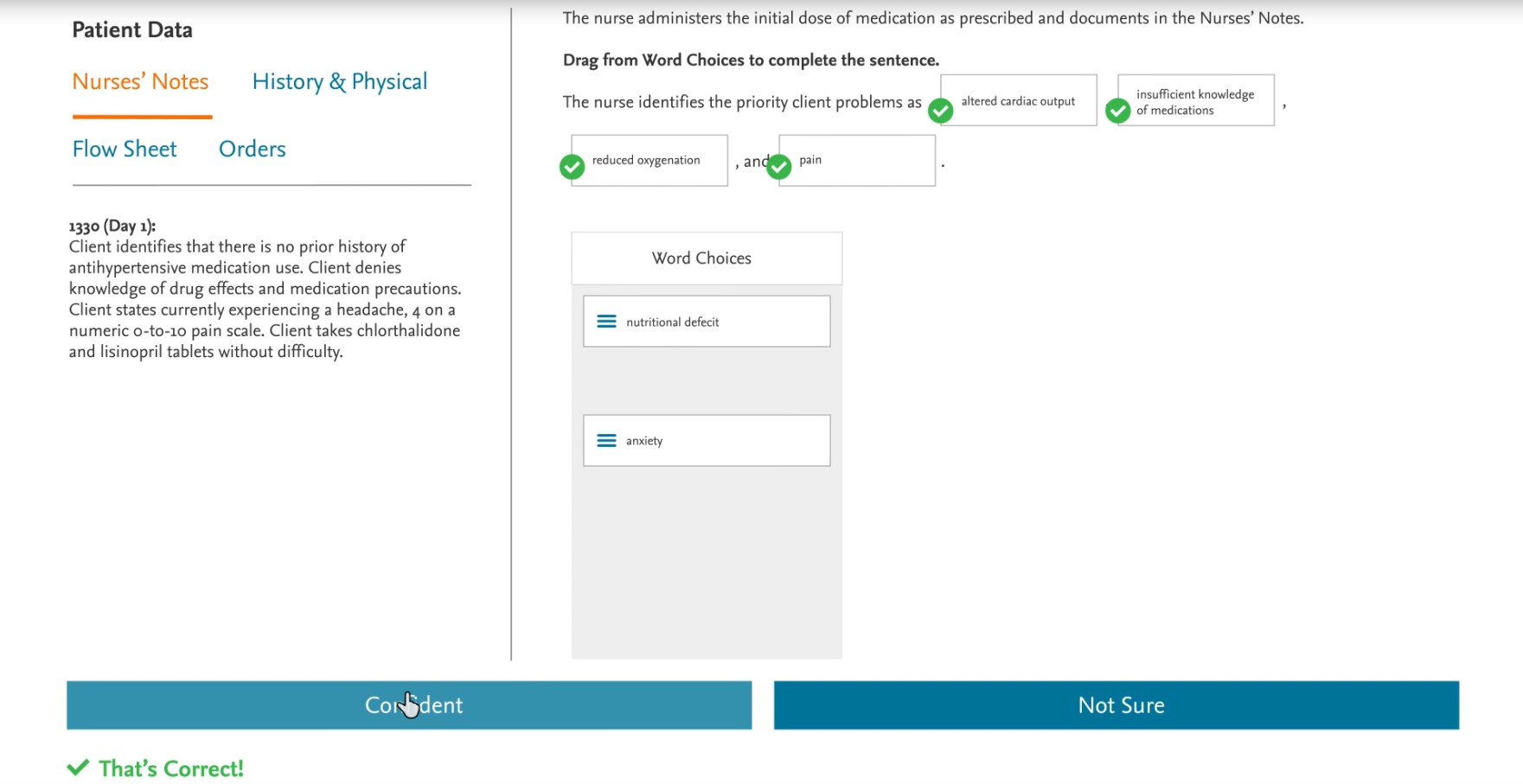
Drag-and-Drop Rationale Item Type
Here is how it works:
Review patient data including:
- Nurse’s Notes
- History & Physical
- Flow Sheet
- Orders
To complete the sentence, drag and drop one condition and one client-finding.
Item includes one sentence with one cause and one effect or includes one sentence with one cause and two effects. This can be a single dyad (one sentence with two targets) or a single triad (one sentence with three targets). Students can remove a token that is on top of a target by dragging it back to the token list or just removing it.
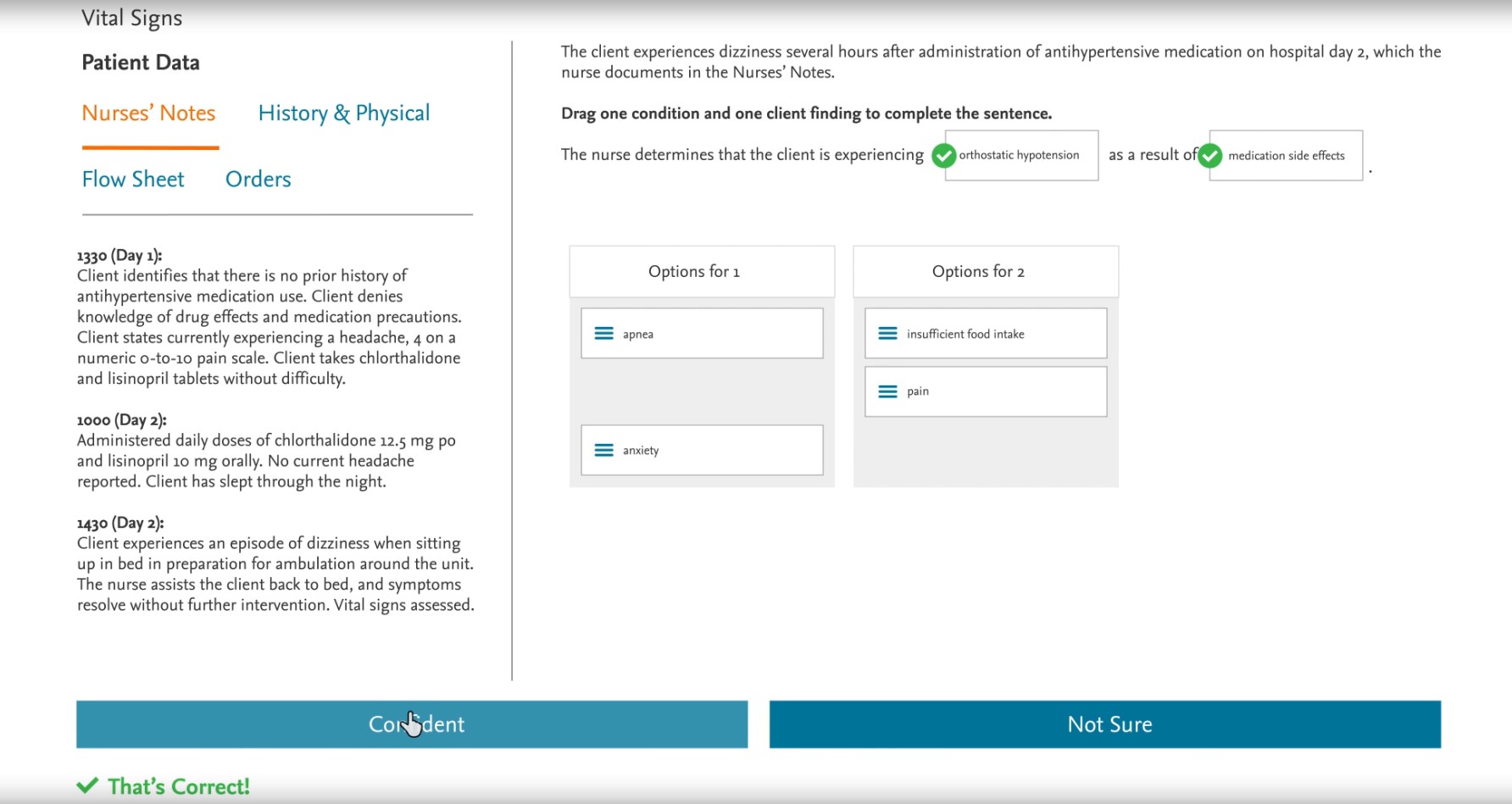
2. Drop down
Drop Down Cloze Item Type
Here is how it works:
Review patient data including:
- History & Physical
- Orders
To complete the statements, select the most likely options from the drop-down.
Includes a paragraph of information with one or more drop‐down selections from which to complete the paragraph. Each dropdown can have 3-5 options. There is a minimum of one sentence with one drop‐down per sentence; a maximum of five sentences with one drop‐down per sentence.
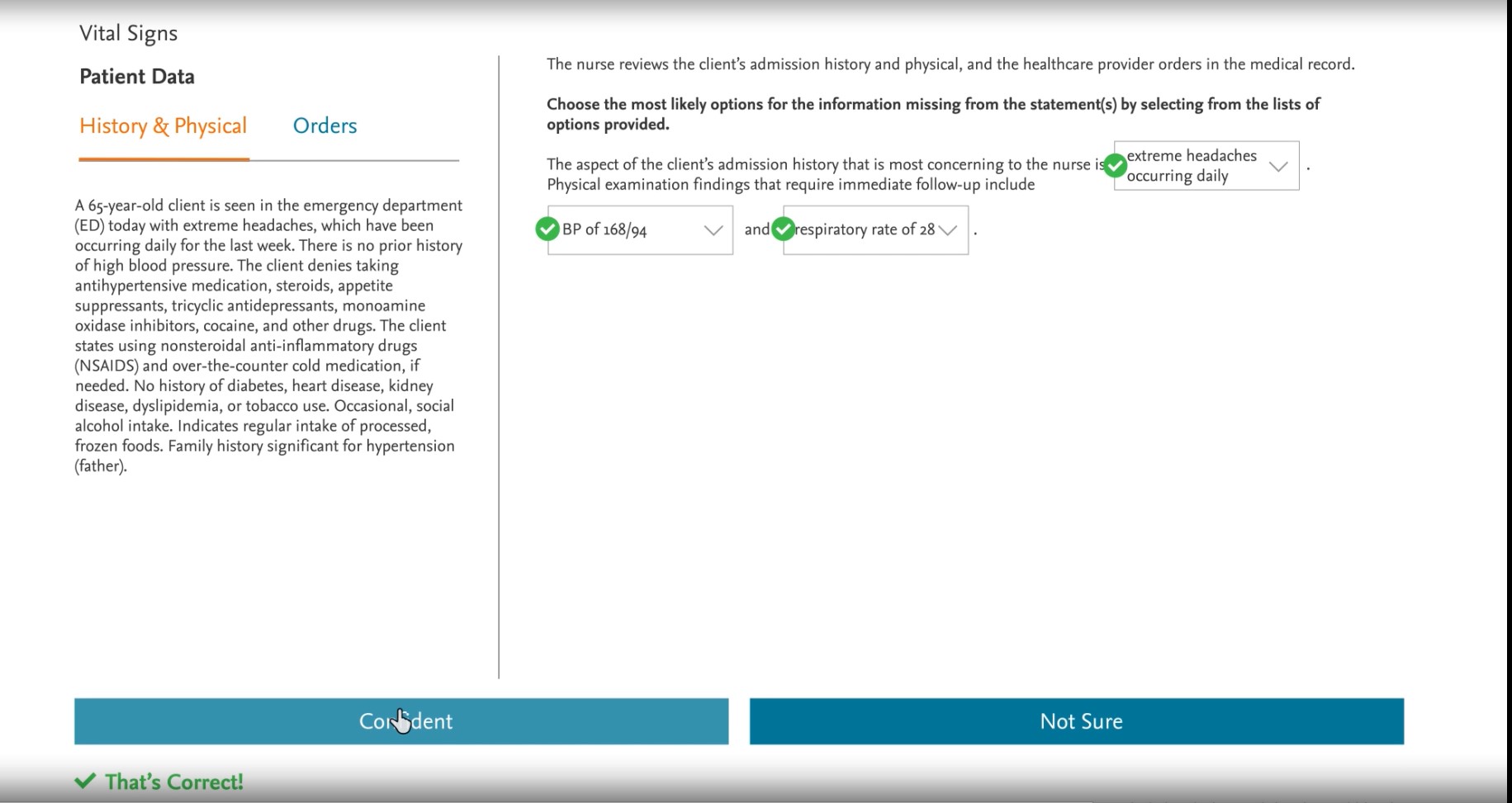
Drop Down Rationale Item Type
Here’s how it works:
Review patient data including:
- History & Physical
- Laboratory Results
- Flow Sheet
To complete the statements, select the most likely options from the drop-down.
Item includes one sentence with one cause and one effect or includes one sentence with one cause and two effects. This can be a single dyad (one sentence with two dropdowns) or a single triad (one sentence with three drop-downs). Each dropdown can have 3-5 options.
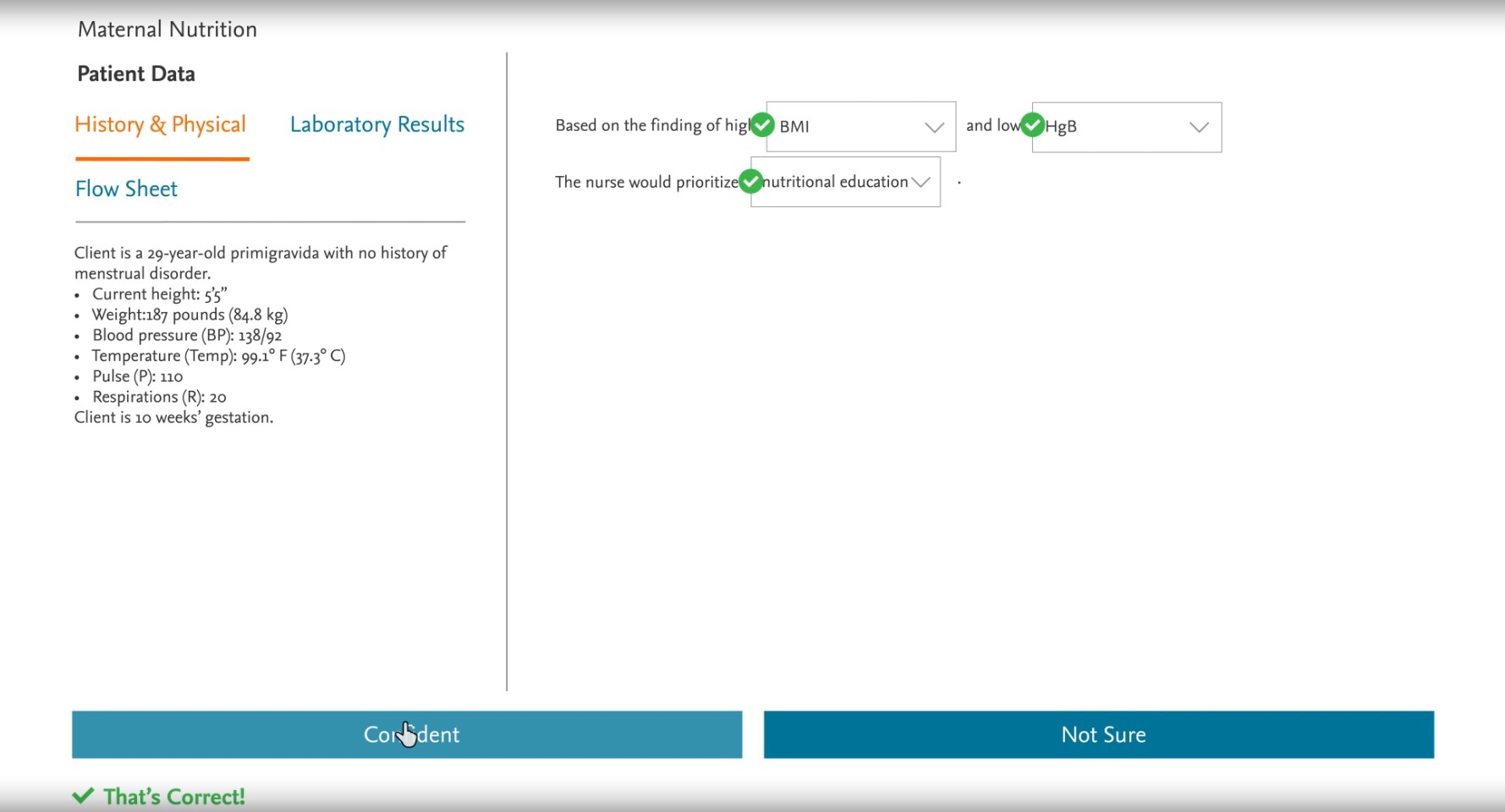
Drop Down Table Item Type
Here’s how it works:
Review patient data including:
- History & Physical
- Laboratory Results
- Nurse’s Notes
To complete the statements, select the most likely options from the drop-down.
Item includes one sentence with one cause and one effect or includes one sentence with one cause and two effects. This can be a single dyad (one sentence with two dropdowns) or a single triad (one sentence with three drop-downs). Each dropdown can have 3-5 options.
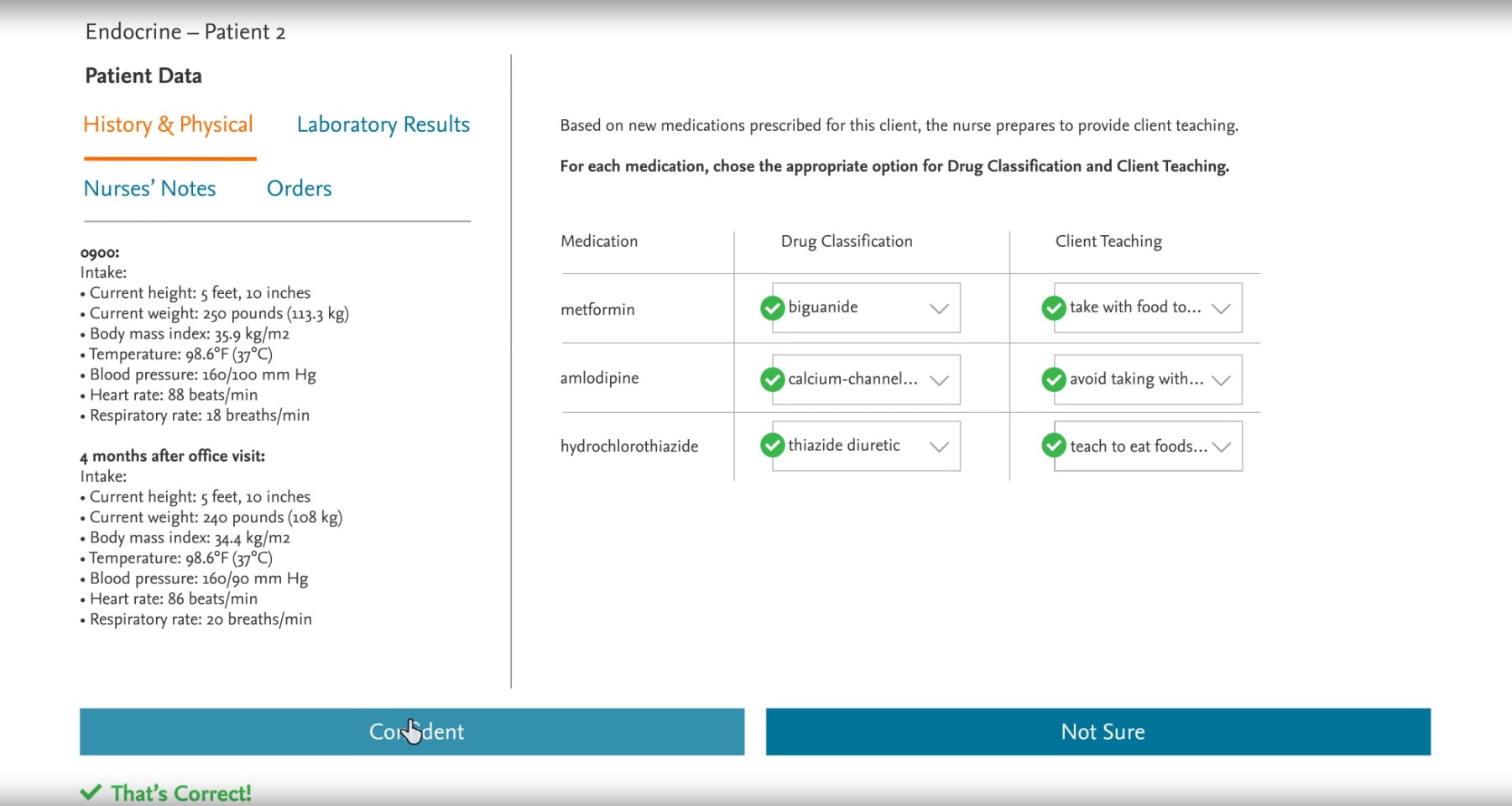
3. Multiple choice
Multiple Choice Item Type
Here’s how it works:
- You’re provided a set of client information.
- Choose the single nursing intervention that would be most suited.
There are radio buttons that can be selected or deselected in this area. If one radio button is selected and another is selected, the selection is moved to the newly selected radio button.
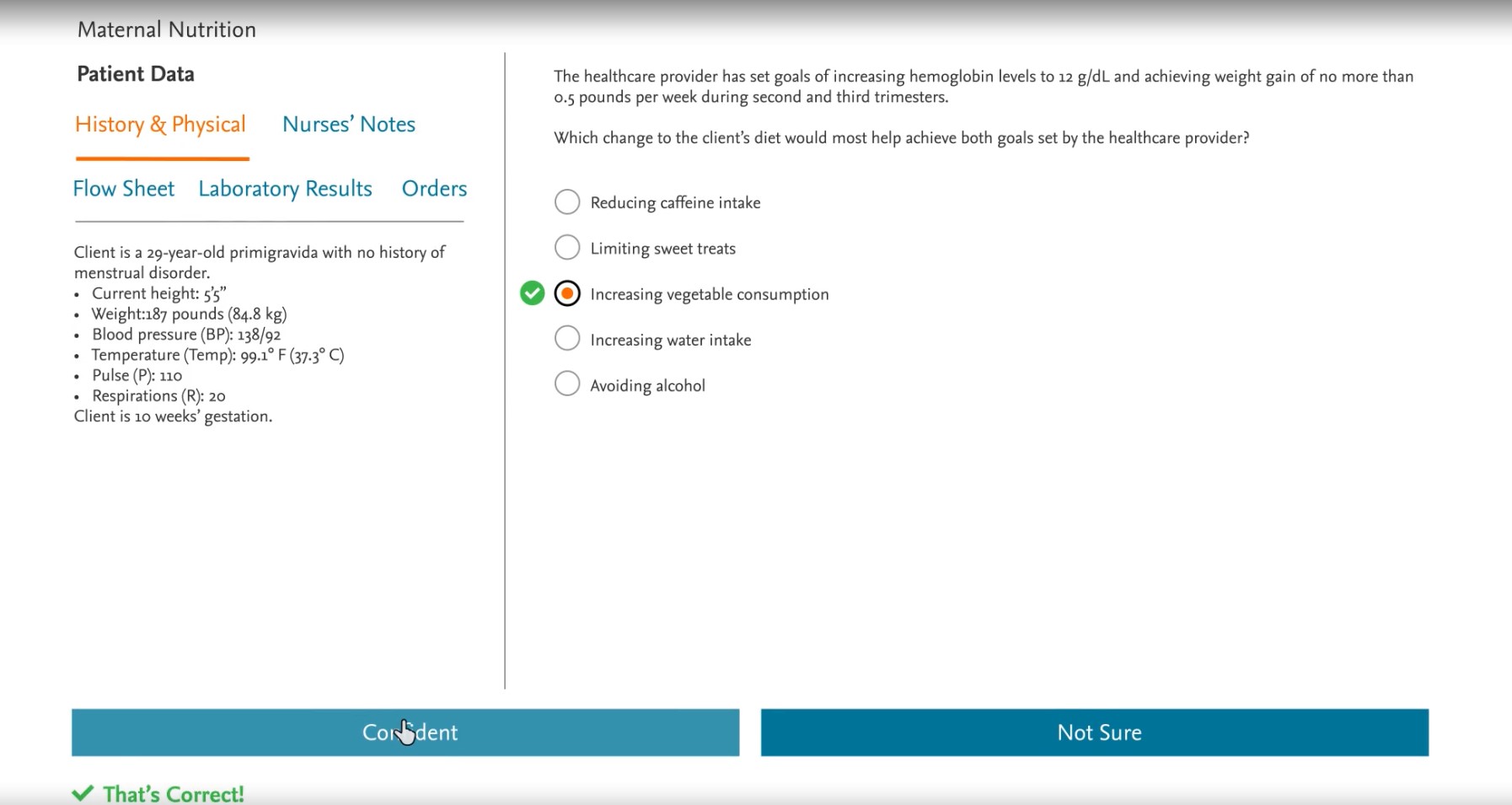
Matrix Multiple Choice Item Type
Here’s how it works:
- A set of patient data is given to you.
- Choose the best option from each row.
There are at least four rows and no more than ten rows in each item. There can be two or three columns of options. One response option must be selected for each row. A student cannot move on to the following item until all of the rows have been answered.
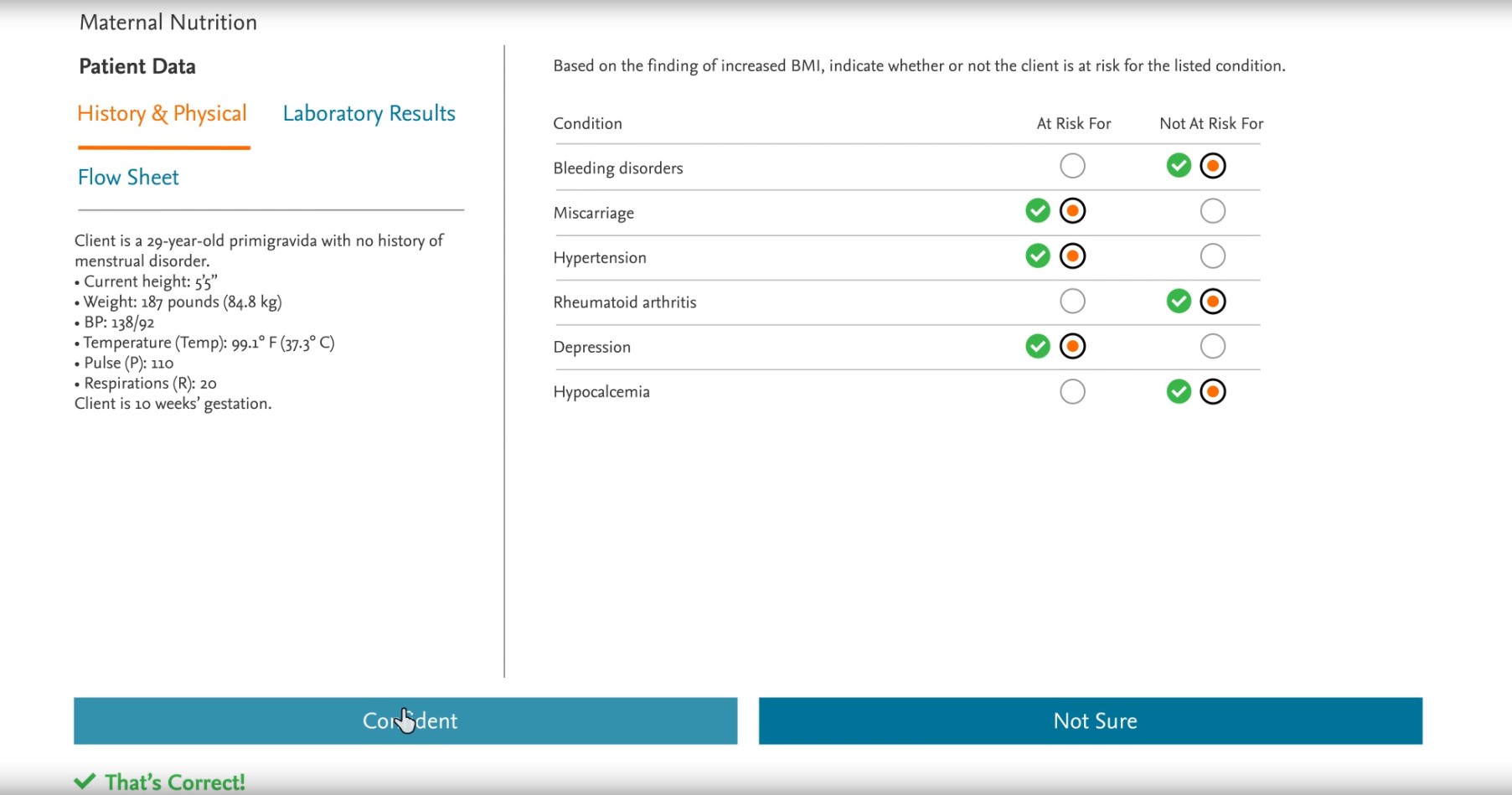
4. Multiple response
Matrix Multiple Response Item Type
Here’s how it works:
- A set of patient data is given to you.
- Select each response that corresponds to a suitable response.
There could be numerous correct responses in each response column. There can be two to ten columns and four to seven rows, with one response option available in each column.
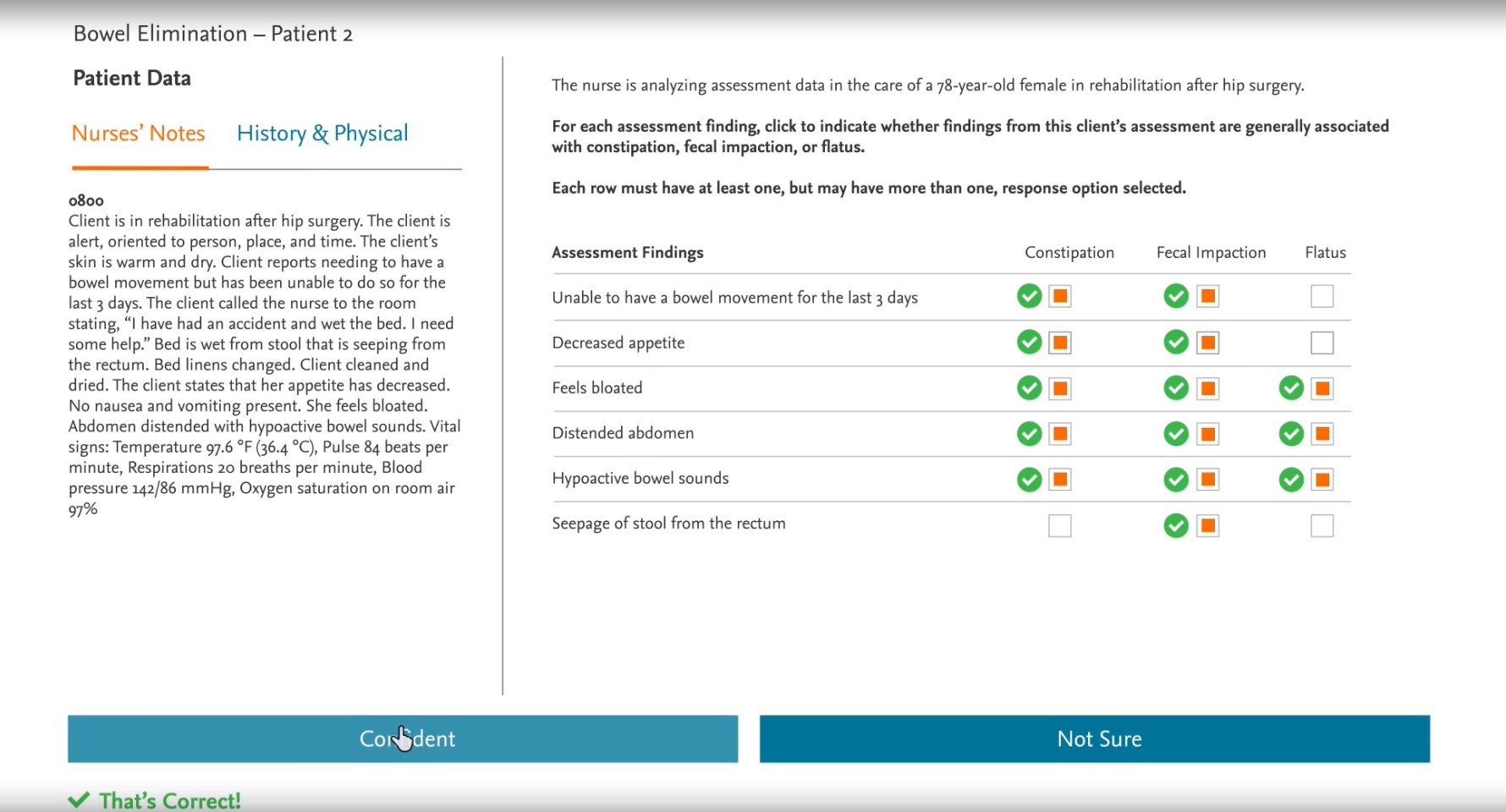
Multiple Response Select All That Apply Item Type
Here’s how it works:
- A set of patient data is given to you.
- Choose any or all of the responses that indicate a proper response.
Questions having only one correct response or several correct responses are included. There are a minimum of five and a maximum of ten options. It’s possible that all ten options are correct.
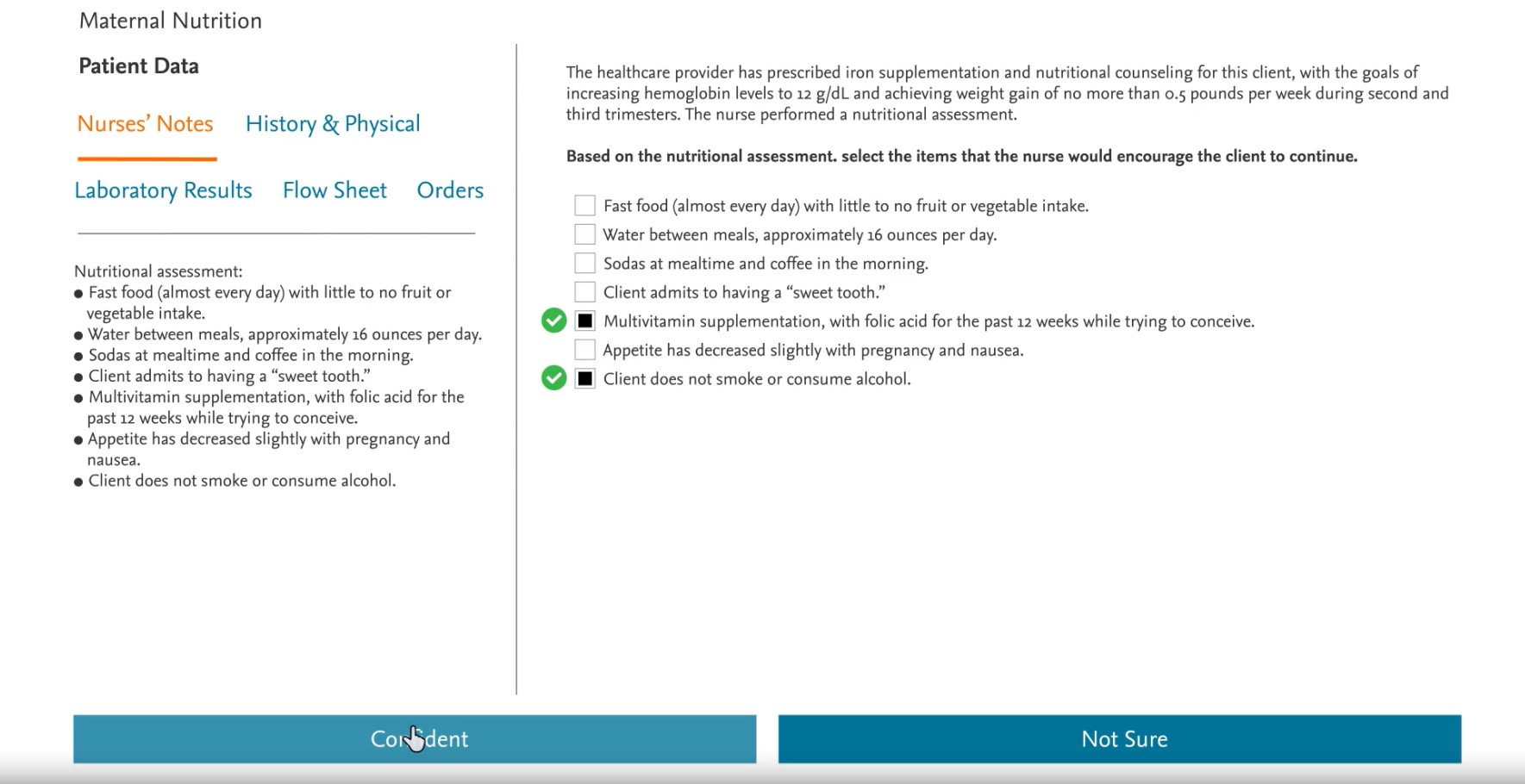
Multiple Response Select N Item Type
Here’s how it works:
- A set of patient data is given to you.
- Choose the “n” number of options from the group that corresponds to the appropriate responses.
In contrast to other multiple response item types, the student is limited to a certain amount of keys and cannot select all of them. The required number to select is determined by the keys.
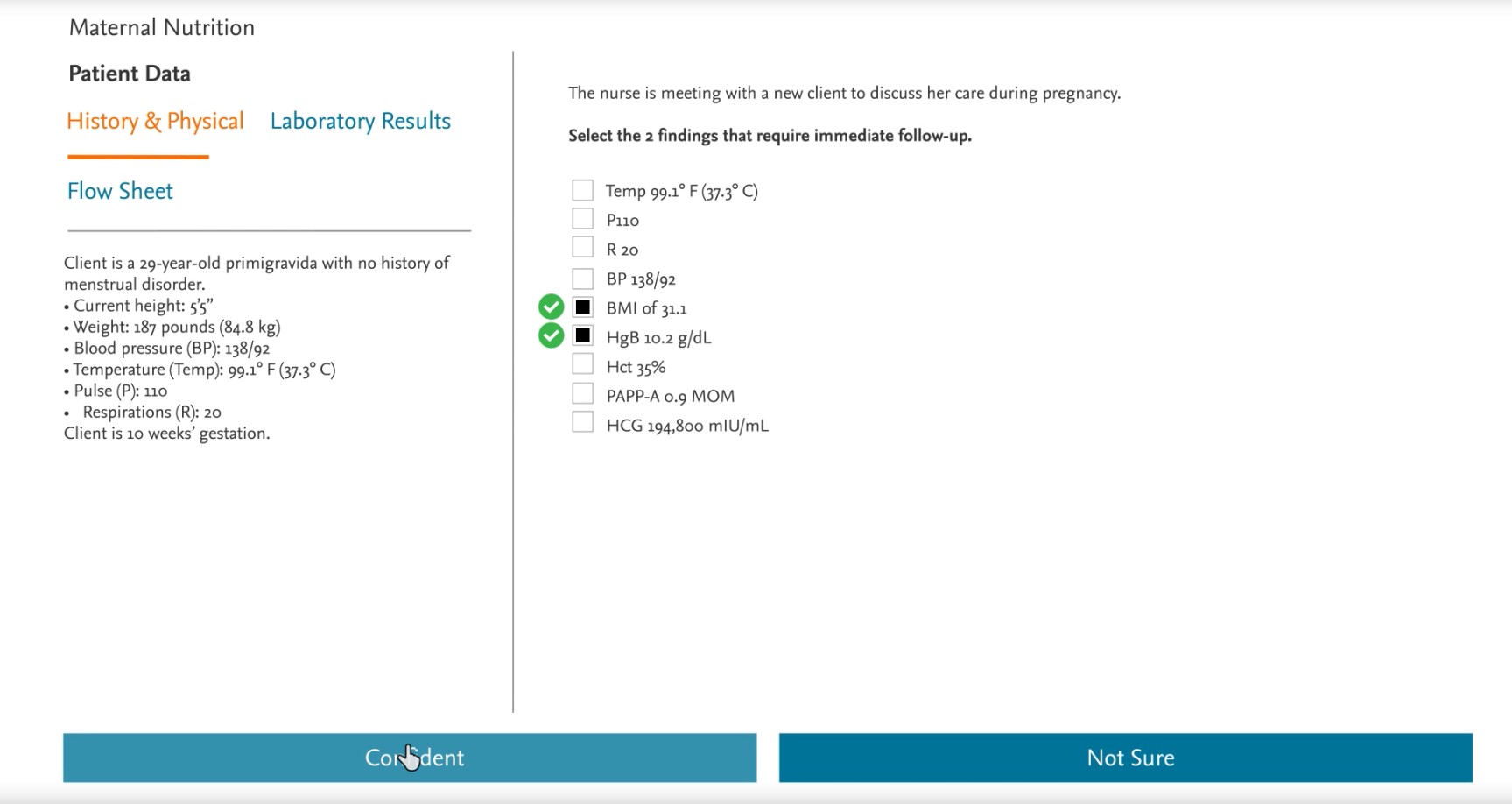
Multiple Response Grouping Item Type
Here’s how it works:
- A set of patient data is given to you.
- Choose the appropriate response from each of the responses in the group.
There are a minimum of two groupings and a maximum of five groupings in the table. There are a minimum of two and a maximum of four options in each grouping. All groupings have the same amount of options, and students must choose at least one option from each grouping.
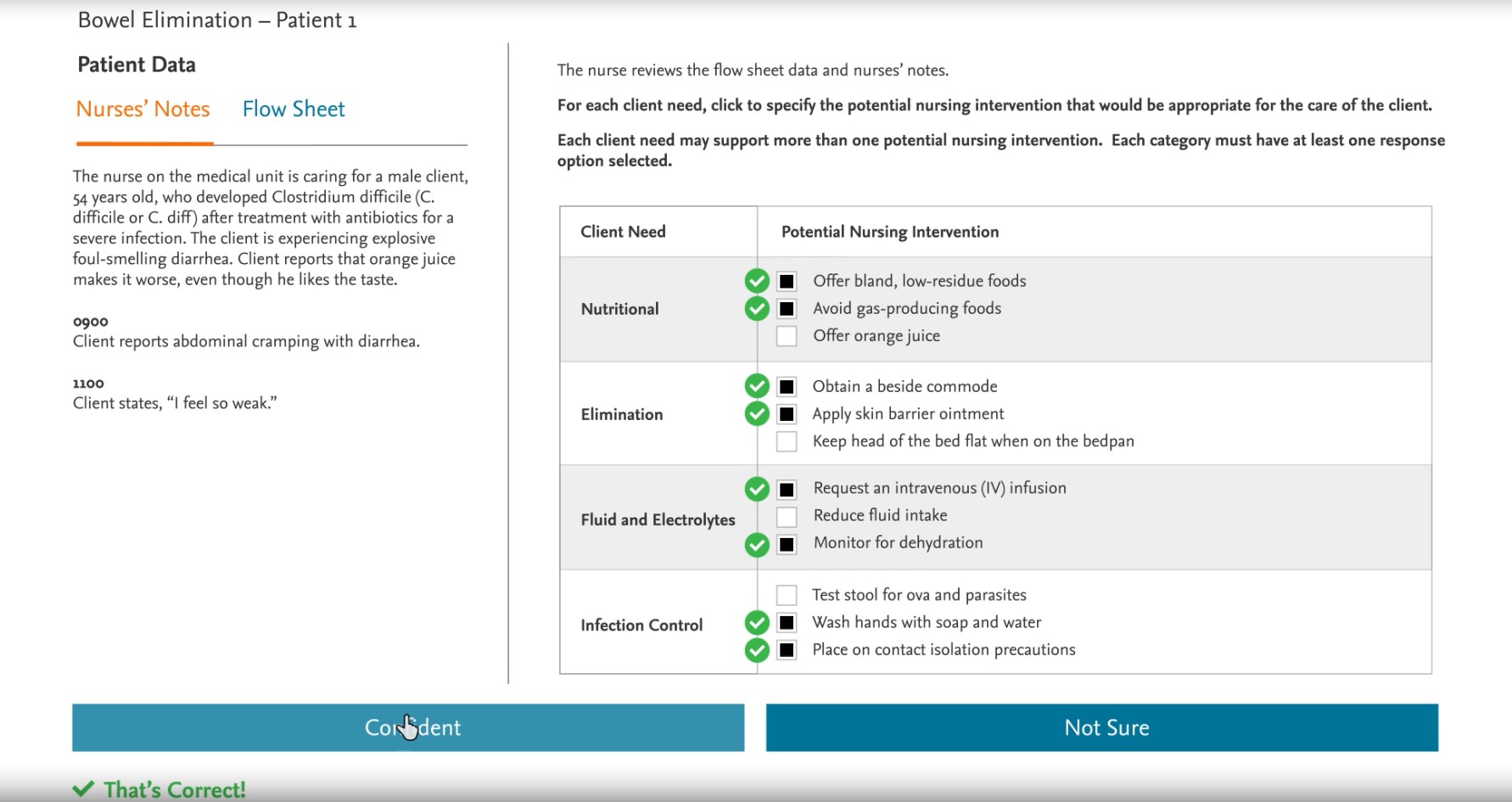
5. Highlight
Highlight Text Item Type
Here’s how it works:
- A set of patient data is given to you.
- Highlight the text that is crucial in determining a course of treatment.
Students must choose parts of the text to decide what is necessary for the action to take place. Responses are tokenized, and a maximum of ten options are allowed. Students can also select and unselect the options.
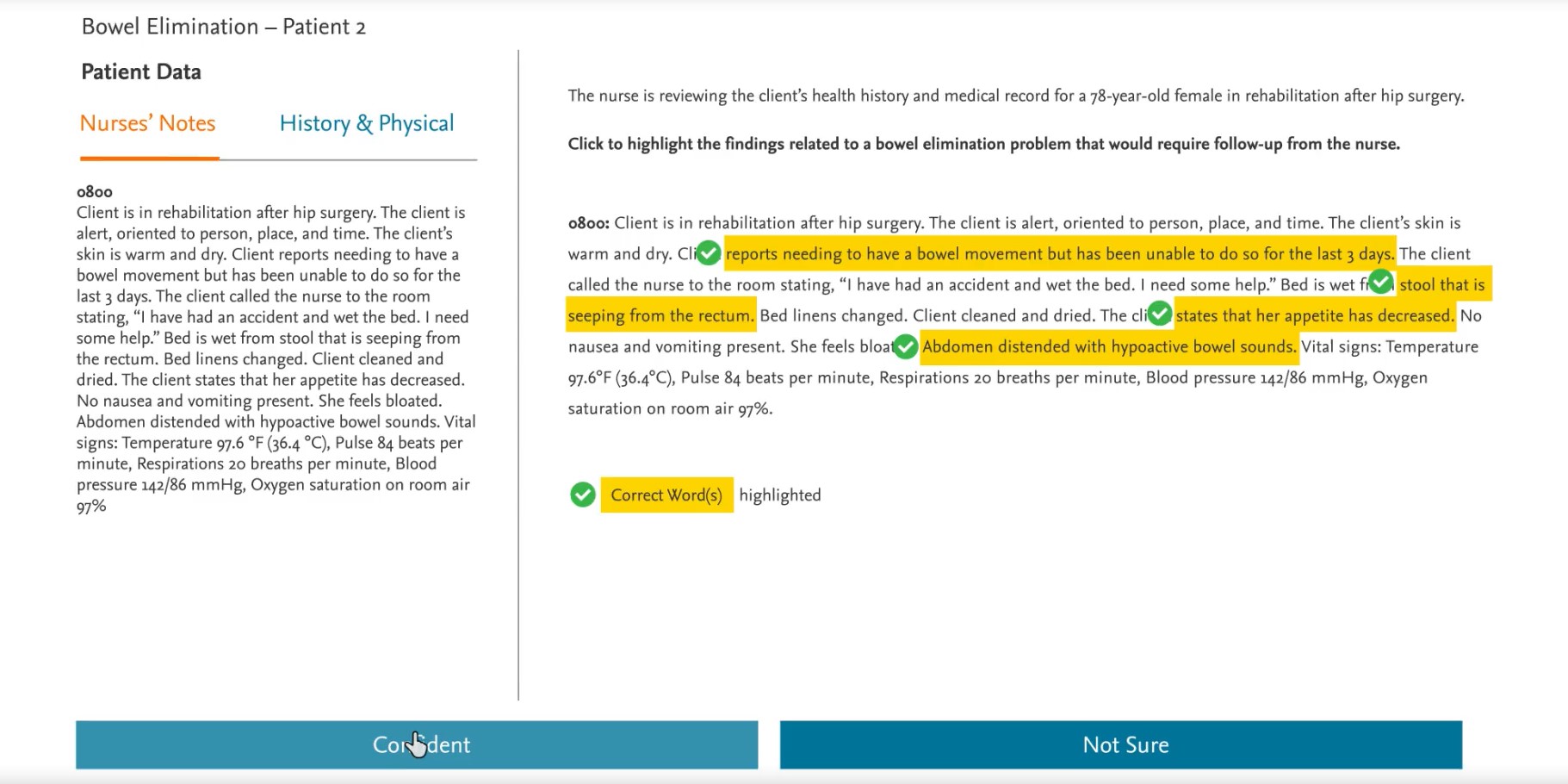
Highlight Table Item Type
Here’s how it works:
- You are given a set of patient data.
- Highlight all the text that is critical in determining a course of treatment.
Students must choose parts of the text to decide what is necessary for the action to take place. Responses are tokenized, and a maximum of ten options are allowed. Students can also select and unselect the options.
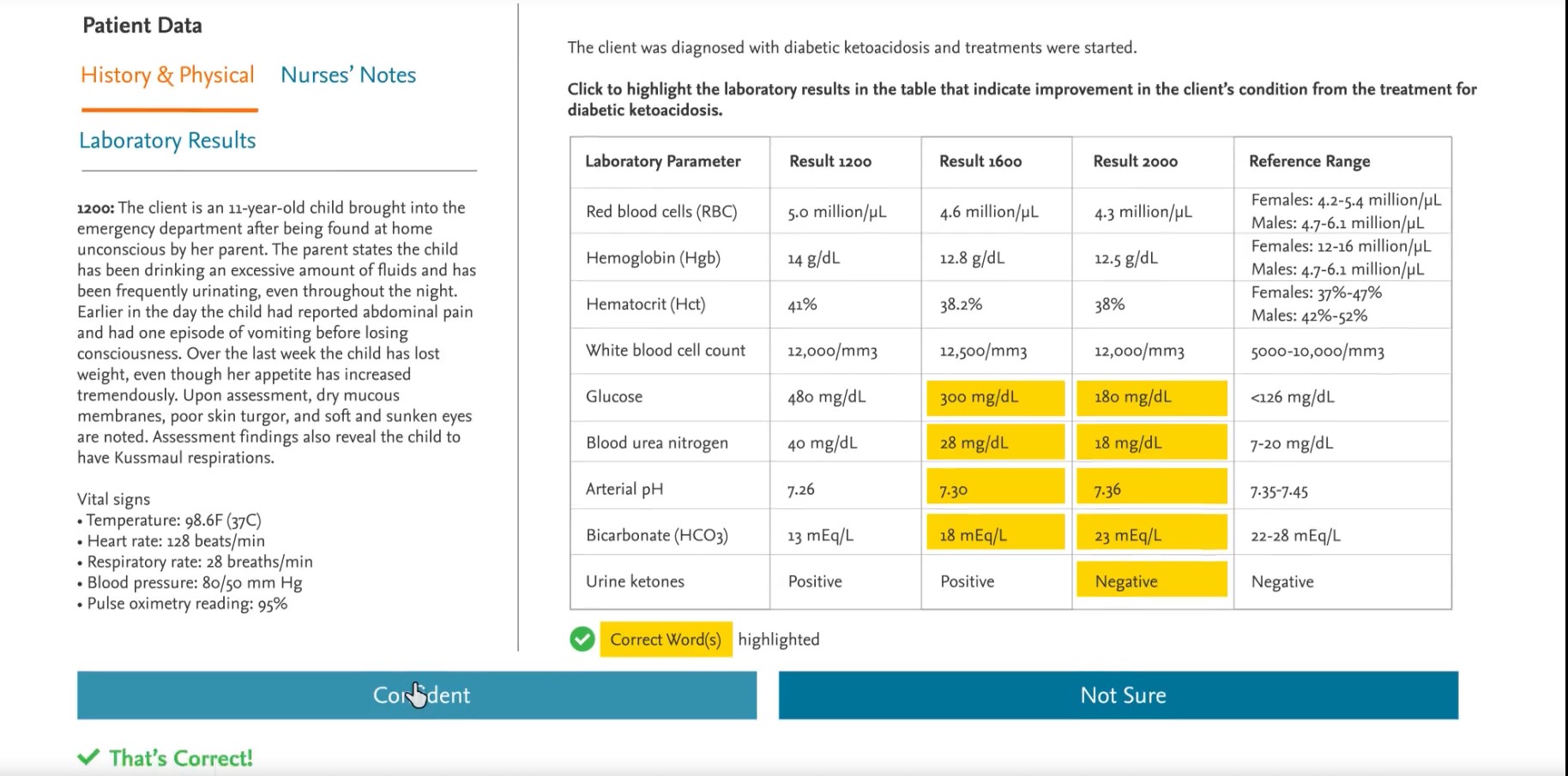
6. Bowtie
Here’s how it works:
- There are three types of responses.
- Actions to take
- Potential conditions
- Parameters to monitor
- To continue, drag & drop an item into each of the targets at the top.
In one item, the NCJMM’s six steps are addressed. To go on, students must drag and drop an item onto a series of targets.
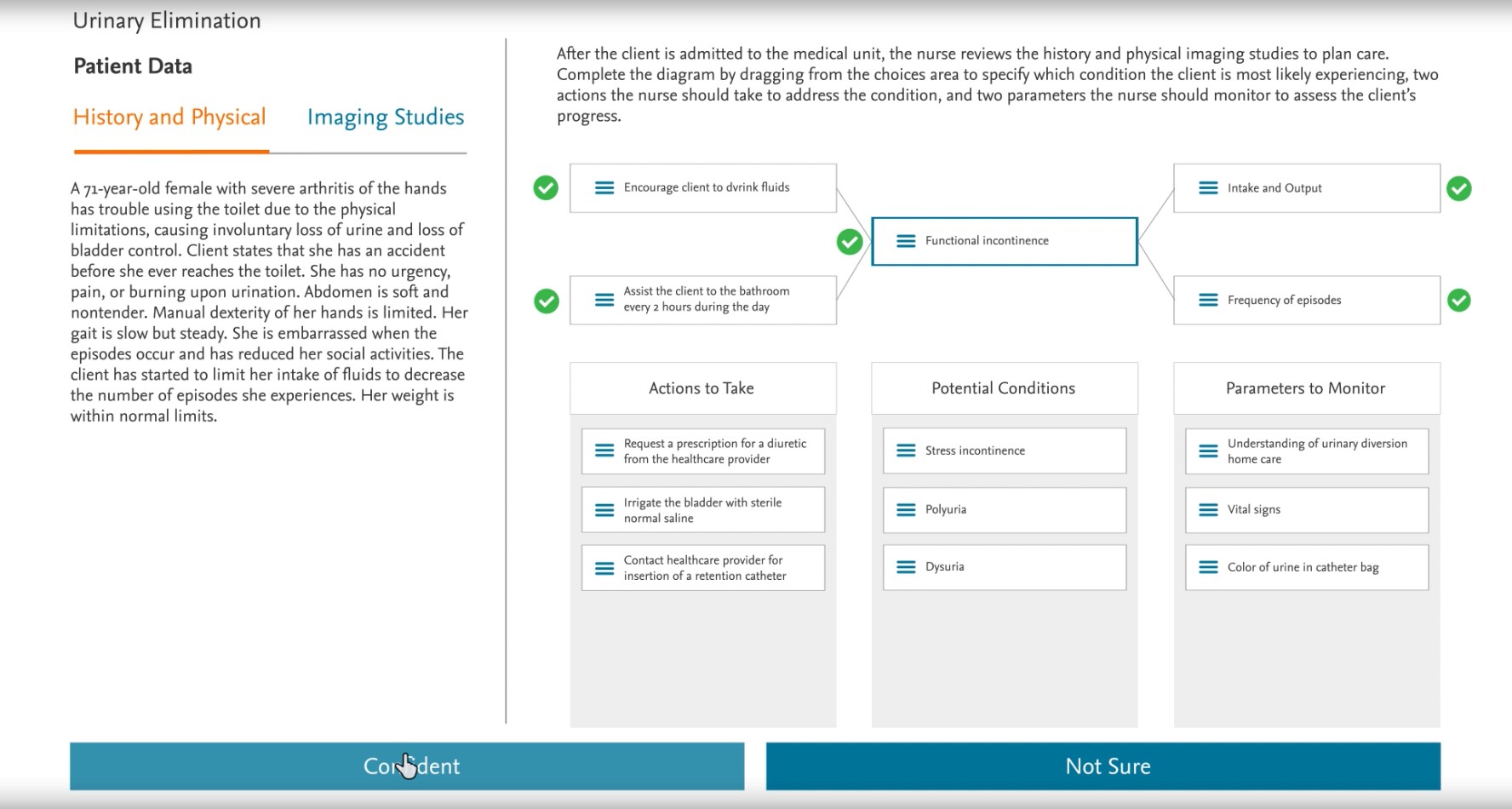
7. Trend
Here’s how it works:
- A set of client needs are given to you.
- Select the nursing intervention(s) that would be appropriate for each client’s need.
By having the student review knowledge over time, it addresses numerous steps of the NCJMM. Any item response type can be used in trend standalone items.

The fact is that nurse educators are already employing case studies as a teaching and/or assessment tool and multiple-select questions as a testing format, regardless of how or whether these question types are adopted. Even while there may be future adjustments, it is important to keep in mind that the current methods nurse educators use to prepare students for the NCLEX or entry into the workforce do not appear to need to be drastically altered right away.
Read more >> How is the HESI A2 Exam Scored?
As change is inevitable, it’s critical to understand the most recent facts about the HESI Assessment Next Generation. We hope you learned something from this article.

PCCN vs CCRN: Which Certification Should I Take?
In this discussion, we will examine the fundamental distinctions between PCCN vs CCRN certifications, allowing you to make an informed and right decision about which certification is best for your nursing career progression.
June 20, 2023

Is PCCN Worth It? A Comprehensive 2025 Study Guide
In this article, we will provide all the enrollment criteria, how to apply, whether is PCCN worth it for you to obtain, and how to get a high mark.
June 20, 2023

PCCN Requirements - How to Become a Progressive Care Certified Nurse?
To become a progressive care nurse, you must first obtain the PCCN certification. This post will help you understand PCCN certification, PCCN requirements, and efficient approaches to obtaining this certification.
June 20, 2023

